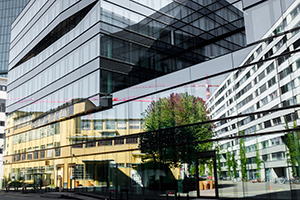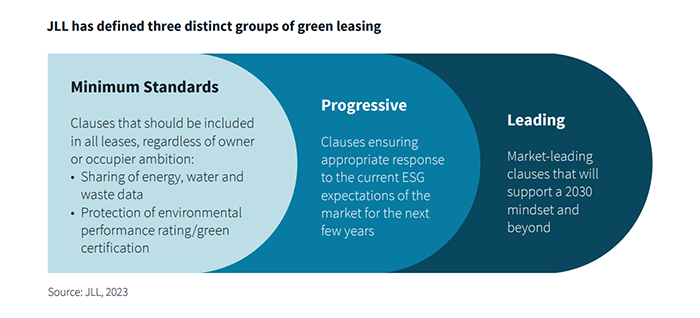
Green Leases Drive Decarbonization

As real estate occupiers face increased pressure to lower their carbon footprint and investors seek to green their portfolios, so-called “green leases” benefit both parties while also decarbonizing real estate, reported JLL, Chicago.
The report, Green Leasing 2.0: Bridging the Owner-Occupier Divide to Deliver Shared ESG Value, outlines considerations building owners and occupiers should include to incorporate sustainability.
The Institute for Market Transformation, Washington, D.C., reported the U.S. could reap $3.3 billion in annual cost savings if every leased office building implemented green leases. JLL found 42% of investors and 34% of occupiers currently implement green clauses in their current leases and said implementation could double with an additional 37% of investors and 40% of occupiers planning to enact green lease clauses by 2025. “Integrating an extended vision for decarbonization through the full life cycle of a building’s lease will help both occupiers and owners track toward sustainability goals,” the report said.

Guy Grainger, JLL Global Head of Sustainability Services and ESG, called collaboration between the owner and occupier to incorporate energy-efficient measures crucial. “Existing leases, both green and non-green, do not allow this and a new model is needed with increased transparency and data sharing,” he said. “Green Leasing 2.0 will increase operational efficiency and lower costs will realize the mutual value of greener buildings to all stakeholders.”
With just seven years remaining to cut built environment emissions in half to meet the Paris Agreement scenario, real estate leaders need to do the following, the report said:
Educate – Leases are complex legal agreements, and individuals will be reluctant to agree to certain terms without clear understanding. Shared information and communication in the lease process can help bridge the divide between building owners and occupiers.
Engage – Ongoing engagement and mission-aligned collaboration between owners and occupiers is required throughout the life of the lease, JLL said. Lease clauses that formalize regular points of contact are useful and effective, but engagement should remain flexible, the report said.
Share Equity – Green leases should be equitable and include cooperation and cost-sharing clauses between owners and occupiers. “Transparency and data-sharing of energy, water and waste production also supports this practice and are good ways to build trust,” the report said. “Data measurement and sharing is a critical first step to integrate into green leases, more common in countries like Canada, France and the Netherlands, but in the U.S. and the UK, some hesitancy remains.”
Grainger noted JLL integrates sustainability into its own corporate real estate strategy. “Green leases are an important tool to help us meet our ESG goals with the added bonus of driving efficiency,” he said, noting JLL’s office fit-outs use 15% less energy than a standard code design, which represents a $2 million-plus annual cost savings across its portfolio.
